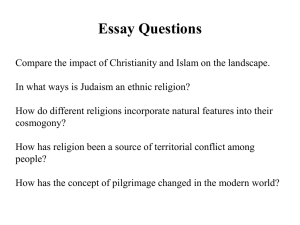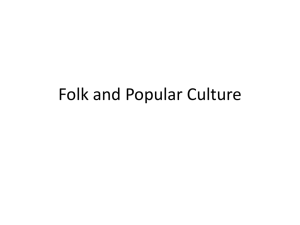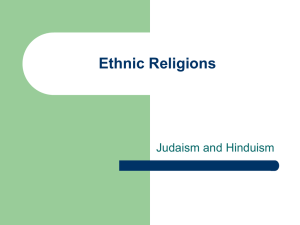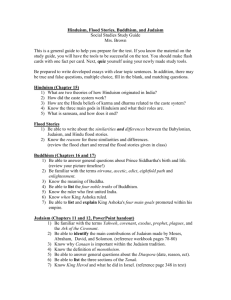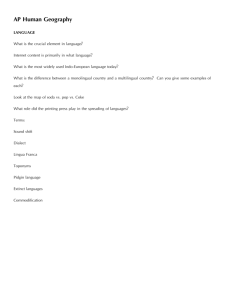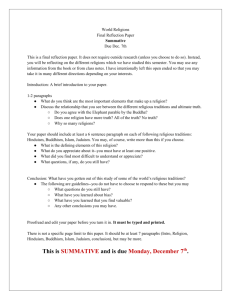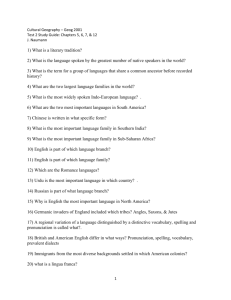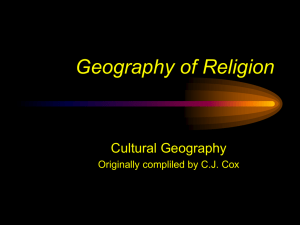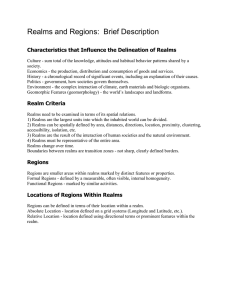Chapter 7 PowerPoint Slides
advertisement
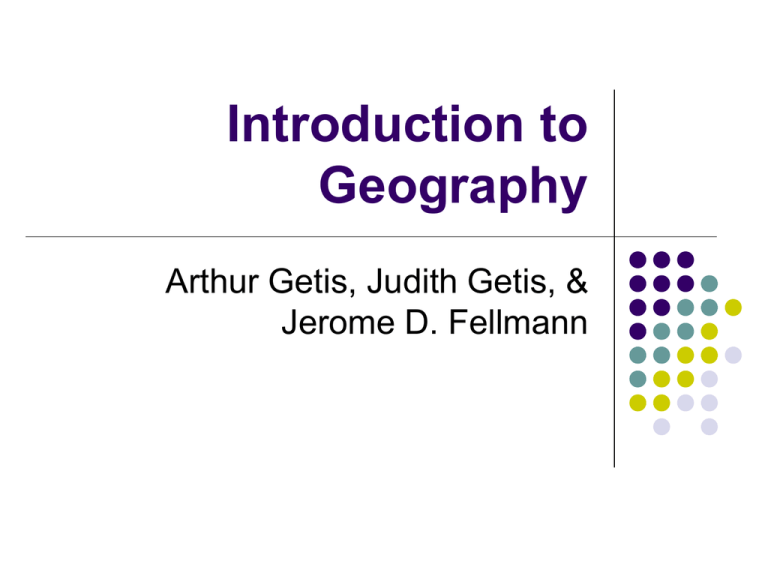
Introduction to Geography Arthur Getis, Judith Getis, & Jerome D. Fellmann Cultural Geography Chapter 7 Overview Components of Culture Interaction of People & Environment Subsystems of Culture Culture Change Language Religion Ethnicity Gender & Culture Culture Realms Components of Culture Culture is learned, not biological A complexly interlocked web of behaviors Culture traits Culture complexes Culture regions Culture realm Interaction of People & Environment Environmental Determinism Possibilism Cultural landscapes The earth’s surface as modified by human action Subsystems of Culture Technological Sociological Artifacts Sociofacts Ideological Mentifacts Culture Change Innovation Spatial Diffusion Syncretism Acculturation Amalgamation theory Assimilation Language Language families Language spread & change Indo-European, etc. Word meaning, pronunciation, vocabulary, & syntax Standard & variant languages Dialects Pidgins & creoles Lingua franca Language & Culture Gender differences Language as a unifying force Bilingualism / Multilingualism Toponymy Religion Dominant in some societies, less so in others Affects social roles, economics, politics, etc. Classification of Religions Universalizing Ethnic Seek to transmit beliefs to others Buddhism, Christianity, Islam Strong territorial & cultural ties Judaism, Hinduism, Shinto Tribal or Traditional Small, ethnic religions Judaism Monotheistic Ethnic religion Origins in Southwest Asia about 3,000-3,500 years ago Dispersion after 1st century AD (CE) Known as the Diaspora Synagogues are centers of worship Christianity Origins in Southwest Asia 2,000 years ago Grounded in Jewish religious beliefs Universalizing; grew rapidly Split by dissolution of the Roman Empire Reformation in the 15th & 16th centuries Islam Judeo-Christian roots Mohammed lived in the early 7th century in modernday Saudi Arabia Five Pillars Koran Should be read in Arabic Succession disputes led to Sunni / Shi’ite split Islamic calendar begins in 622 AD with the flight to Medina (Hegira) Sunnis account for 80-85% of Muslims Worship centered on the mosque Hinduism Possibly 5,000 years old 1 billion adherents 80% of Indians Spread into Southeast Asia No single creed or doctrine Caste system Dharma A lot of rites, ceremonies, festivals, and gatherings Temples & shrines are important Buddhism Began in the 6th century BC in what is now northern India Siddhartha Gautama was the Buddha, “Enlightened One” Four noble truths Universalizing Spread to Sri Lanka, Southeast Asia, China, Korea, & Japan Ethnicity Refers to the ancestry of people who share some common characteristic Language, religion, race, national origin, customs Territorial segregation Gender & Culture Gender is a social term, not biological Greatly affected by culture Traditional roles changed by industrial revolution & modern society Culture Realms Regionally discrete areas that are more alike internally than they are like other realms
